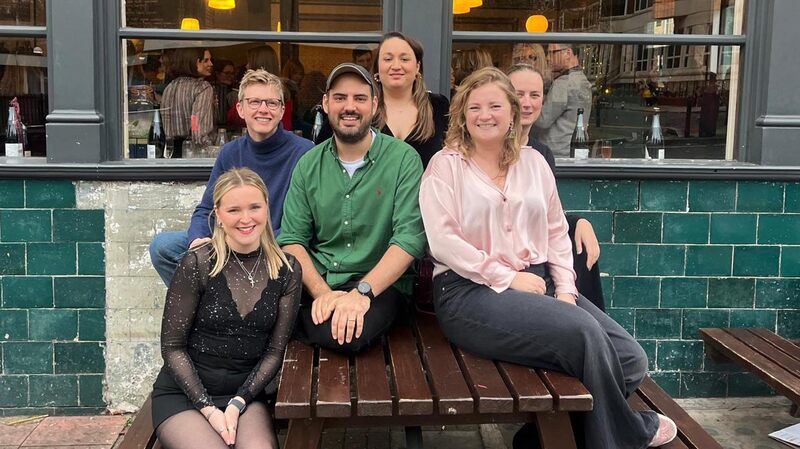You are viewing your 1 free article this month. Login to read more articles.
Customer needs must drive change in academic publishing, says Napack
Putting customer needs at the heart of your thinking, and letting that drive the change, and pace of change, in your business is the number one lesson for an academic publisher as it navigates the digital transition, according to Brian A Napack, the newly appointed president and c.e.o. of John Wiley.
Napack, speaking to The Bookseller ahead of taking up the role in November, said he had been attracted back into a full-time role in academic publishing – after leaving his Macmillan c.e.o. post in 2011 and joining investment firm Providence Equity Partners – because “I have a fundamental belief in the long-term importance of the space, that high-quality content augmented by powerful tools and workflows is always going to be valuable in the world."
He added: "I deeply believe in the asset I am joining – an incredible company with a broad range of extremely high-quality publishing output, terrific people, and a legacy and brand names that matter. Its role as a developer, curator, publisher of content is very important, and they do it very, very well.”
That the industry is going through significant change is “fascinating”, he says. “There’s a fundamental question at all of the businesses that Wiley participates in, and that’s what’s the business model going forward,” he notes. “But I have no question at all that there is a need for the role that has traditionally been played by the publisher. It’ll look different, the products will look different, the tools and services that surround those products will look different – but to think the whole world is going disaggregated,user-driven, and open, is not realistic. It’s not what people necessarily want. What we’ve learned in the media industry after media industry that has gone through the transition, that it’s not really about losing or dismissing that [traditional] role, it’s about enhancing that role and bringing the price/value proposition into balance.”
The level of change affecting academic and professional publishing is far more intense than the digital transition for trade publishing as he experienced it at Macmillan, he says. “Yes, you can deliver e-books and some people prefer them, but as long as we protect intellectual property, which we try and do, I never really worried about trade publishing.” In the higher ed sphere, though, “change is a never-ending time cycle, change is not going to end during my career.
"Every segment of the overall industry is going through it with a different start point and a different rate of progression. The important thing is that the lessons are all the same. The lesson is, the definition of what content is has to change. You have to define content in a way that is fundamentally useful to the customer. And that means that content goes from static to active content, it goes from being content to being content plus tools and services.”
He warned: “The customer’s willingness to adopt new business models is usually the gating factor. It’s not typically the willingness of the [producer] to innovate. The number one thing is to be customer-centric. You have to understand what our customers – our consumers, our clients – are going through, and what they are trying to accomplish in their lives as individuals and institutions. We have to be inside of their needs, and if we are not inside of their needs, we are going to fail.
“Therein lies the place where most of the traditional media and content companies – throughout the entire sector – have failed. Because publishers have not been a customer-centric group of people, they have been a content or product-centric group of people. We produce beautiful content and everyone will always want it and they’ll be willing to pay us for it. Well you know what, at one point I think that was true. But in times of change, we think the burden is on the inventor to come up with some brand new thing and some brand new model and the market will adopt it. A better mousetrap - everything works. It turns out that is not the case, it is the client who has to drive it. You can invest in the most beautiful platform for content creation and distribution ever, you can create the most beautiful content, but if the market is not ready for it, and it’s not really willing to get into a commercial relationship with you on it, it’s all for naught. So the first thing is to be customer-centric and then you orient around that.”
Ahead of taking up his Wiley role, Napack notes that he is still an “outsider” and can’t comment with inside information on priorities for the company. But he picks out last year's “brilliant” acquisition of Atypon as “a really good example of a customer that recognizes it has to evolve what it does for its marketplace”, as well as of online education firm Deltak in 2012, “going exactly where the market is going.”
"Wiley said a few years ago, yes, we’re a great content publisher but what are the real needs of the higher education institutions? They are going through a transition that is at least as wrenching as the one we’re going through, working out, ‘How shall I be a university in the digital age?’ So when Wiley bought Deltak it made them one of the very, very top leading-edge companies in helping universities in that transition.”
Of the priorities for a c.e.o. leading a company through change, he said: “The important thing is to help the organization to understand the high-level vision of where the company is going. Ultimately the leader’s job is to support that step – these are great people, they come to work every day and they want to do a good job, they want to create the innovative products, they want to support their customers, they want to be associated with the high-quality content the company has created. Ultimately what I really see my job as is helping those people to succeed and putting the processes or support structures in play so they can do that….And let them know that it’s OK that we don’t know the future, it’s OK that not everything is a success, it’s OK to try, experiment and fail. These things are OK – what’s not OK is to shrink from the challenge.
“It’s such an exciting time to be in our industry. The opportunities and challenges are colossal. If we solve those challenges we’re going to not only wind up with a beautiful business, we’re going to make the world better – researchers are going to learn better.”















